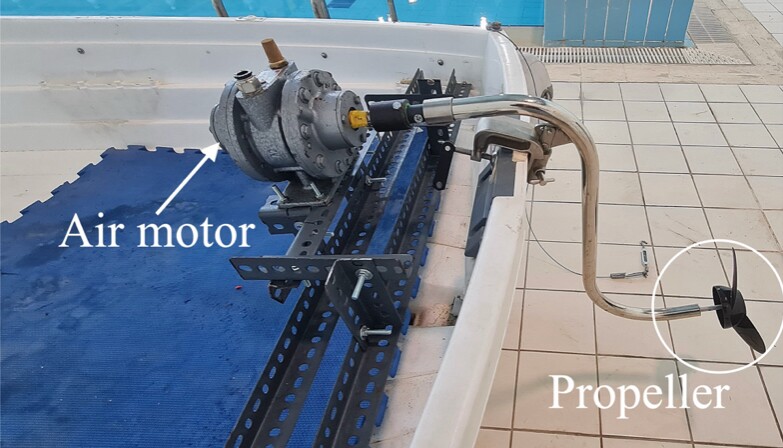While battery-electric ferry boats may be more eco-friendly and require less maintenance than their diesel-burning counterparts, they’re still not perfect. That’s why scientists are now looking into powering small ferries using nothing but compressed air.
One drawback of battery-electric watercraft lies in the fact that their batteries take a relatively long time to charge.
Some people also think that for their size and weight, those batteries have a low energy density. And what’s more, batteries lose their ability to hold a charge over time, and ultimately have to be disposed of.
With these problems in mind, Prof. Abdul Hai Alami and colleagues at the United Arab Emirates’ University of Sharjah recently turned their attention to compressed air.
The scientists created a pneumatic drive system consisting of two 40-liter compressed air tanks that are connected to a 6-hp “air motor,” which is in turn coupled to a propeller via a steel shaft. As air is released from the tanks at a pressure of 200 bar (2,901 psi) it causes the motor – and thus also the propeller – to rapidly rotate. Gear boxes can be added to adjust the speed and direction of thrust.

University of Sharjah
In swimming pool tests, the system was installed on a three-to-four-passenger PVC boat which was made to resemble the Abra ferries commonly used in the United Arab Emirates.
A poolside-located device known as a load cell was connected to the rear end of the boat via steel cables. When the drive system was fired up, its thrust was measured by the pulling force it exerted on the load cell. As a control, the same boat was also fitted with a similar-capacity electric motor powered by a conventional battery.
It was ultimately found that the pneumatic setup was able to deliver 6% more propulsive force, along with an operational range comparable to that of a battery-electric system with a 12-volt/18-Ah battery pack. What’s more, the researchers estimated that the pneumatic system’s annual carbon footprint would be 307 kg (677 lb) lower than that of an equivalent battery-electric system.
That smaller footprint is due in part to a proposed system in which dockside photovoltaic panels would be used to power a compressor that would pressurize the tanks – no fossil-fuel-based energy sources would be required. The idea is that in the time it took for one batch of passengers to disembark and another batch to board, the tanks would be recharged and ready to go.
All of that being said, the pneumatic drive system would initially be limited to use in fairly short-run ferries, and perhaps also in recreational watercraft utilized near the shore.
“The depletion of the tanks systematically decreases the amount of energy available, since starting from a tank at 200 bar provides higher energy quality than when this pressure decreases to 100 bar or 50 bar,” Prof. Alami tells us. “Thus venturing far from a charging station might be risky at this early stage of development.”
A paper on the study was recently published in the journal Ocean Engineering.
Source: University of Sharjah via EurekAlert
Source of Article